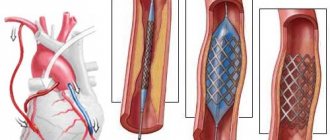Fitness for service with additional chords
The formation of an additional chord in the cavity of the left or right ventricles is often either asymptomatic or the symptoms are mild. Therefore, as with the diagnosis of MVP, patients often learn about disorders only during a planned visit to a cardiologist.
There is no article in the Schedule of Diseases that addresses additional chordae. For this reason, the diagnosis of MARS and the army are absolutely compatible. A conscript will be able to be released from service only if there are serious problems with his heart.
Advice from the Recruit Help Service:
The decision to call for minor anomalies should be made only after additional examination by a cardiologist. To receive a referral, you need to provide the military registration and enlistment office doctor with documents from a state medical institution confirming your diagnosis.
Do they enlist in the army with an open foramen ovale?
The suitability category for a patent foramen ovale (PFO) depends on the size of the defect and the presence of blood discharge. With a small hole, no more than 5 mm in size, there is no disruption of blood flow. In this case, the patient can continue to lead an active life and play sports, but with some adjustments.
Examination of conscripts with an open foramen ovale also takes place according to Article 42 of the Schedule of Diseases. If the anomaly does not cause blood discharge, the draft commission must give the conscript a fitness category of “B-4” - fit with minor restrictions.
This is important to know: Are they recruited into the army with chronic tonsillitis?
If an anomaly in the development of the heart is accompanied by a violation of blood flow, the draft commission will decide on the issue of exemption from conscription. Deferment from the army on this basis is not given.
With respect to you, Daria Radaeva, head of the legal department of the Assistance Service for Conscripts.
Reviews
Dear readers, you can leave your feedback on whether anemia and military service are compatible in the comments; your opinion will be useful to other users of the site!
I was admitted with anemia. I always had low hemoglobin, I provided them with certificates and the commission decided that I was fit. Plus, they promised that just in the army, my hemoglobin would rise on its own.
I have suffered from iron deficiency anemia since childhood. I constantly take all sorts of courses and go to the hospital. When I was drafted, I provided them with all my certificates from childhood. They wanted to take it, but they still didn’t take it. They issued a ticket with validity category B.
Patent foramen ovale – call or delay?
Patent foramen ovale (OOF)
- communication between the atria formed during intrauterine development. The difference between PFO and atrial septal defect is that with an open foramen ovale there is, but with the second there is no valve covering the hole from the left atrium.
Expert opinion
Antonov Viktor Sergeevich
Practicing lawyer with 8 years of experience. Specialization: military law. Recognized legal expert.
Under normal conditions, the oval window usually closes between 2 and 12 months after birth. However, this favorable option does not occur for all people.
According to various authors, the oval window remains open in 20-40% (on average - in 25-30%) of adults.
The noted very high prevalence of this feature determines the significant interest that arises among conscripts when undergoing examination at military registration and enlistment offices - after all, if you follow the law, every third young man who was considered healthy before the study can legally be issued a military ID only on the basis of the described disease. In the literature, there is traditionally an opinion that when the foramen ovale is open, significant circulatory disorders do not occur - its size, as a rule, is not large.
A number of doctors and researchers regard a patent foramen ovale as a variant of the normal development of the interatrial septum, and in expert medical documents there is no idea of its negative manifestations.
However, in addition to ordinary situations, it is worth remembering that the most dangerous manifestations of a patent foramen ovale occur during severe physical activity: military combat, shooting, forced marches, drill training. The greatest dangers await conscripts who have concomitant dysfunction - prolapse - of the mitral or tricuspid valves.
The most dangerous complication of an open foramen ovale is the so-called paradoxical embolism (penetration of a blood clot into the arteries). This complication is the main cause of death in healthy people in relative well-being.
Timely detection of a patent foramen ovale can prevent deaths. In order to diagnose LLC, it is advisable to conduct an in-depth examination of patients from “risk groups”, including persons called up for military service.
For diagnosis, conventional echocardiographic examination and Doppler echocardiographic techniques are used. Modern treatment of an open foramen ovale is performed through a delicate operation performed by penetrating the heart through the vessels with a special device.
How is a medical examination carried out at the military registration and enlistment office commission in the presence of an open foramen ovale? The disease itself, according to the International Classification of Diseases (ICD 10), has code Q21.4 and belongs to the group: Congenital anomalies. In accordance with paragraph “c” of Article 80 of the “Schedule of Diseases”, the draft commission must send the conscript for a medical examination.
If the diagnosis of “patent foramen ovale” is confirmed, you should be assigned a category of fitness for military service “B – limited fit for military service” and sent to the group awaiting receipt of a military ID. But this does not always happen, quite often, citing the fact that this is not a congenital heart defect, but a so-called “minor anomaly”, “developmental feature”, the disease fits within the framework of Article 42 of the Schedule of Diseases, because in the vast majority of cases in conscripts it has absolutely no symptoms.
This is important to know: How to hand over a person to the army
Accordingly, there is no heart failure necessary to obtain category “B” under Article 42. This, of course, is not true, but life makes its own adjustments.
The MedExpert clinic has a sufficient diagnostic base, extensive experience in diagnosing, describing this disease, and drawing up appropriate decisions for presentation to military commissariats. By contacting us, you save time, money and nerves.
Reliable legal support determines the timely implementation of the decision and obtaining a military ID truly legally. This should not be confused with buying a military ID and “excusing yourself” for health reasons.
Considering that a patent oval window occurs in one in three people, think about it: maybe it's time to make an appointment? Good luck.
Expert doctor Markin Sergey Mikhailovich.
Why is a health deferment granted?
A man of military age may be granted a deferment from military service if his current health condition does not meet the existing standards determined by current legislation. There is a special document called the “Schedule of Diseases,” and it is this that the doctors of the military medical commission are guided by when making their verdict. As you know, there are five categories of fitness, and if a conscript falls under some of them, then no one has the right to send him to the troops. For example, category “A” is awarded to absolutely healthy guys who do not have any health restrictions. They can serve in all branches of the military.
Falling under category “D” clearly indicates that the young man cannot serve in the army. This “deferment” is granted to him for life, and even in the event of war, he will not be drafted into the Armed Forces. Category “B” does not give the right to a deferment, so the young man can prepare for the oath. True, he can count on restrictions, and he will not be able to enlist in certain branches of the military.
MARS diagnosis and the army
MARS - minor anomalies of cardiac development . This is how this abbreviation stands for - it is a category of conditions and characteristic features in the structure of the heart that do not lead to certain significant pathologies of blood circulation and heart functioning.
Such anomalies are often considered congenital and are initially detected in childhood. In certain cases, with the growth and formation of the child, some minor anomalies in the development of the heart may undergo reverse development and disappear completely.
The remaining minor anomalies can continue into adulthood.
Numerous residual characteristic features of the structure of the adult heart are a unique legacy of intrauterine life, where the structural features of the heart performed quite significant functions. Often, such anomalies do not bother patients in any way.
If certain complaints are present, they are similar for any age - although in children at an early age it is more difficult to recognize them.
It is worth understanding that MARS is not a disease, but only a characteristic feature of the structure of the heart, congenital or acquired. Since in modern medicine, ultrasound diagnostic methods are often used, in particular ultrasound, these anomalies are found directly with the help of such studies.
A person may not be aware of such a disorder at all throughout his life and only in adulthood can such a characteristic feature be detected on an ultrasound.
As you can already understand, with such a diagnosis one is drafted into the army, since it is not a disease, but a certain birth defect.
How does the pathology of MARS progress?
This process is called an anomaly because the structure of the heart differs from normal. And they are called small because these changes do not cause disruption of the hemodynamic process.
Expert opinion
Antonov Viktor Sergeevich
Practicing lawyer with 8 years of experience. Specialization: military law. Recognized legal expert.
MARS implies a pathology in the formation of connective matter, which is considered the framework for cardiac structures. Connective matter plays a significant role not only in the structure of the heart, but also in other organs.
For this reason, if more than three MARS are present at the same time, it is necessary to examine the person for the presence of connective tissue dysplasia with the formation of disorders in other organs.
This is important to know: How to restore a passport without documents
Recently, the detection of minor cardiac anomalies has become more frequent: this is not associated with an increase in their absolute number, but with the introduction of echocardiography, which has become more accessible. MARS has a fundamental difference from heart defects. Anomalies do not affect human life in any way.
How does pathology occur in young people?
- With minor physical exertion, a feeling of palpitations, fatigue, and pain in the heart area occurs; sensations of cardiac arrest;
- Signs of disorders of the vegetative-vascular system may be observed: fainting, dizziness, weakness, increased sweating, and others.
Typically, the presence of signs can only be traced by combining several small anomalies at once. If there is a combination of more than three minor anomalies, shortness of breath, arrhythmia and symptoms of congestion (swelling, increased liver size) are likely to occur, since there is a disturbance in the blood circulation.
Military service and arrhythmia
A young man is taken into the army with arrhythmia if it takes the following varieties:
- tachycardia, accompanied by rapid heartbeat;
- bradycardia. With this type of arrhythmia, the heart rate slows down;
- extrasystole. With this pathology, single arrhythmic beats occur. With extrasystole, there is no change in heart rate.
If certain types of arrhythmia are present, the conscript receives the right to be assigned category “D”. These include:
- paroxysmal tachycardia. With this pathology, heart contractions increase sharply. Adverse symptoms such as weakness, fear of death, shortness of breath, and a feeling of pressure in the chest area may appear;
- presence of Adams-Stokes-Morgagni attacks. With this pathology, complications such as loss of consciousness or respiratory arrest may occur;
- weak sinus node syndrome;
- ventricular extrasystole.
Valve prolapse and the army
The most common MARS is mitral valve prolapse (MVP).
In the usual state, the movement of blood flow is carried out according to the following scheme:
- First the valve opens.
- Blood enters the ventricle.
- The valve closes.
- The ventricle contracts.
- Blood enters the aorta.
In patients with mitral valve prolapse, during ventricular contraction, the valve leaflets do not close, but sag into the atrium. As a result, blood flow is disrupted: part of the blood comes back.
Experts distinguish 3 degrees of MVP, of which only the first belongs to minor disorders. At this degree, the deflection of the valves is no more than 6 mm, regurgitation (outflow of blood) is insignificant. The syndrome passes latently, signs are not detected. In some cases, a person may complain of irregular heartbeat or arrhythmia.
To determine whether in this case a person diagnosed with MARS will be expected to serve in the army, it is worth paying attention to Article 42 of the Schedule of Diseases. It states that pathological changes do not interfere with military service. If no other serious illnesses are identified, the conscript will receive a B-4 fitness category.
Will a conscript with anemia be drafted into the army?
Until 2020, this disease was not taken into account during conscription, but after the government updated the list of diseases, anemia became a reason for receiving a deferment. A “white ticket” can be issued if the conscript’s medical history contains information about frequent relapses of the disease. Exacerbations must be accompanied by a long hospital stay or hospitalization. If all treatment for anemia is carried out at home, then the conscript is considered fit for military service.
The hemolytic severe form of the disease is considered an absolute contraindication to service. If anemia accompanies any chronic illness that provokes bleeding, loss of consciousness, general weakness, pain of various etiologies, then the conscript is also considered unfit. But a citizen will not be given a deferment or release from service just like that. It will be necessary to undergo an additional medical examination, provide extracts from the medical history and a conclusion from the attending physician confirming the diagnosis and the presence of attacks.
Do they take into the army with a diagnosis of MARS?
MARS is a large group of conditions. Which are the most key and significant of them?
- Open oval window (OOO ). The oval window is one of the embryonic adaptations for fetal blood flow. This is a natural defect between the right and left atria, due to which blood from the right half passes to the left. Under normal circumstances, the LLC is closed during the child's first year of life.
- Aneurysm of the interatrial septum . This anomaly is a simplified version of the previous one. Under normal circumstances, the oval window closes over time with a connecting membrane. In some cases, this membrane of pulsating blood may protrude from the left to the right atrium.
- Enlarged Eustachian valve . This is also a component of the embryonic circulation, which is located in the inferior vena cava. Its increase is indicated when the valve reaches a length of more than 1 cm.
- Tricuspid valve prolapse (TVP) is a closing structure that lies between the right sides of the heart. Prolapse appears in this valve less frequently than in the mitral valve. Otherwise, the situation is similar to mitral valve prolapse, which was discussed above.
Since the diagnosis of MARS is not a disease, but only an anomaly that does not affect the course of normal life, they are drafted into the army with such an anomaly.
Mitral valve prolapse
In the presence of mitral valve disease (MVD) of the 1st degree, the characteristic symptoms of the disease are often absent. The patient's health remains satisfactory. The answer to the question of whether people with congenital mitral valve disease of the 1st degree are recruited into the army is positive. PMH of the first degree is not one of the diseases that exempts you from the army. At the same time, the accompanying documents indicate the relevant information about the presence of mitral valve disease in the young man.










